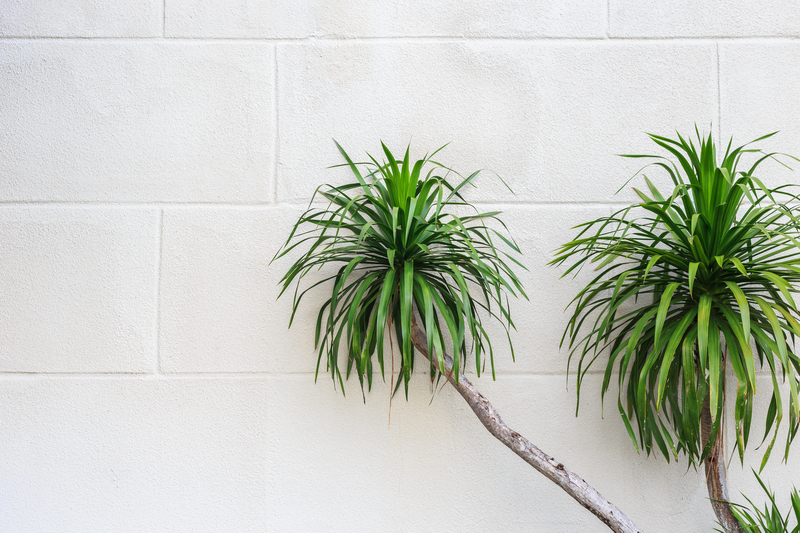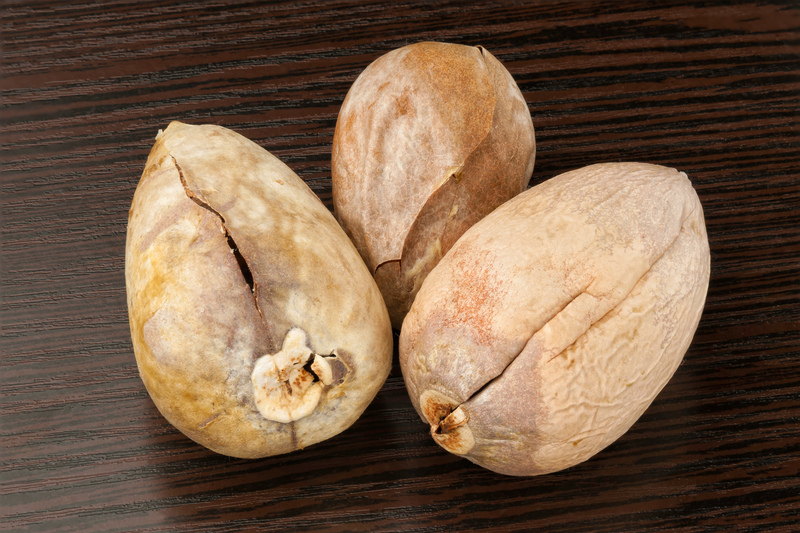Capturing Nutrients in Waste for Thriving Green Spaces
Posted on 16/06/2025
Capturing Nutrients in Waste for Thriving Green Spaces
Green spaces are the lifeline of our urban and rural environments, providing cleaner air, richer biodiversity, and improved well-being. As cities and towns continue to grow, sustaining healthy vegetation and vibrant landscapes becomes increasingly challenging. One effective, eco-friendly solution lies in the strategic recovery and use of nutrients from waste streams. Capturing nutrients in waste offers tremendous benefits to landscapers, municipal planners, gardeners, and the broader environment. This article explores the science, strategies, and advantages of recycling nutrients from various waste sources for nurturing flourishing green spaces.
Why Nutrient Capture from Waste Matters
The world's arable soils are being depleted at unprecedented rates due to intensive farming, erosion, and urbanization. Meanwhile, significant nutrient-rich waste ends up in landfills or pollutes our waterways. By capturing and cycling these nutrients back into the soil, we can create a sustainable model for thriving green landscapes. Let's see why this practice is crucial:
- Reduces landfill loads: Organic waste makes up over 30% of municipal solid waste. Capturing nutrients diverts this waste into productive use.
- Decreases dependency on synthetic fertilizers: Many artificial fertilizers are produced with significant fossil fuel use and environmental harm.
- Builds healthier soils: Nutrients from organic waste improve soil structure, moisture retention, and microbial activity.
- Protects water quality: Capturing nutrients minimizes runoff that causes algal blooms and water pollution.
- Promotes circular economy: Turning waste into resources supports circular, closed-loop systems for cities and green spaces.

The Science of Nutrients in Waste
Nutrients essential for plant growth--such as nitrogen (N), phosphorus (P), and potassium (K)--are abundantly present in various waste streams. These include food scraps, yard waste, biosolids, and even wastewater. Through natural processes or innovative technologies, these nutrients can be recovered and made available for plants to absorb, forming the foundation for lush, healthy green spaces.
Types of Nutrient-Rich Waste Streams
- Organic kitchen waste: Vegetable peels, coffee grounds, eggshells, and other food scraps.
- Yard and garden waste: Grass clippings, leaves, pruned branches, and landscaping debris.
- Animal manure: From livestock and pets, a potent source of macronutrients and organic matter.
- Biosolids: Treated sewage sludge from municipal wastewater plants, rich in nitrogen and phosphorus.
- Green industrial waste: Brewery waste, fruit and vegetable processing residue, and other biodegradable industry byproducts.
Methods for Capturing Nutrients in Waste
There are several proven ways to capture and transform waste nutrients for green landscapes. Below, we examine the most impactful approaches.
Composting: Nature's Method
Composting is a centuries-old tradition and remains a highly effective means of nutrient recovery. When organic matter is aerobically decomposed by microbes, it is converted into rich, stable compost. This compost is a natural soil conditioner brimming with nutrients and beneficial organisms.
- Backyard Composting: Households and community gardens can easily set up bins or piles to break down food scraps and yard waste.
- Industrial/Community Composting: Cities may operate large-scale composting facilities handling residential and commercial organic waste.
- Vermicomposting: Employing worms to process food waste, producing high-value "worm castings" or vermicompost.
Vermi-technology: Harnessing Worm Power
This method uses various species of earthworms to digest organic waste. The result is a superb nutrient-rich amendment, vermicompost, that dramatically enhances soil fertility. Vermi-technology is scalable from household bins to large municipal operations, efficiently repurposing waste into resources for green areas.
Biosolids Recycling: Urban Nutrient Loop
Modern wastewater treatment facilities generate biosolids, which, after careful treatment, are safe and packed with plant-available nutrients. Biosolids recycling is gaining traction globally as a way to close the nutrient loop between cities and the landscapes surrounding them. The process requires rigorous quality control to ensure biosolids are free of pathogens and contaminants, making them a valuable and sustainable fertilizer for parks, fields, and gardens.
Biochar Production: Storing Carbon, Returning Nutrients
Biochar is a stable, carbon-rich substance produced by charring organic material in low-oxygen conditions (pyrolysis). Not only does biochar sequester carbon, it also retains a significant fraction of nutrients from the original waste--especially potassium, phosphorus, and micronutrients. When incorporated into soils, biochar enhances nutrient retention, improves water holding capacity, and supports robust plant growth.
Extracting Nutrients from Liquid Waste
Liquid waste streams, like greywater or certain industrial effluents, often contain dissolved nutrients. Technologies to recover these valuable elements include:
- Struvite precipitation: Crystallizes magnesium-ammonium-phosphate, a slow-release fertilizer.
- Membrane filtration: Separates nutrient-rich concentrates from water for agricultural reuse.
- Algae cultivation: Using nutrient-laden wastewater to grow algae, which can be harvested and used as biofertilizer.
Benefits of Using Captured Nutrients for Green Spaces
The reuse of nutrients from waste sources delivers a vast array of benefits for both managed and wild green spaces:
- Enhanced soil health: Organic amendments foster microbial life and better soil structure, reducing compaction and erosion.
- Increased plant vitality: The slow-release nature of composted and processed nutrients provides steady plant nourishment.
- Reduced carbon footprint: Recycling nutrients cuts down on the need for manufacturing, transporting, and applying synthetic fertilizers.
- Lower maintenance costs: Healthier soils and established nutrient cycles lead to fewer inputs and less watering.
- Biodiversity support: Diverse soil microbiomes support insects, birds, and other wildlife, promoting ecosystem resilience.
- Community engagement: Composting and nutrient recovery programs can bring communities together for greener, more sustainable neighborhoods.
Overcoming Challenges and Ensuring Safety
While capturing nutrients in waste for green space enrichment offers immense rewards, there are challenges to consider:
- Contaminants: Some waste streams may contain heavy metals or persistent organic pollutants that must be removed or avoided.
- Pathogens: Ensuring compost, biosolids, or manure are properly treated and matured is crucial to prevent the spread of disease.
- Community Acceptance: Addressing public concerns and misconceptions about the safety and benefits of waste-derived amendments is vital.
- Logistics: Efficient collection, processing, and distribution infrastructure is needed for successful nutrient recovery programs.
Rigorous standards, ongoing research, and transparent communication help address these issues and pave the way for widespread adoption of these practices.
Best Practices for Implementing Nutrient Recycling in Green Spaces
Those responsible for parks, gardens, municipal landscapes, or community gardens can maximize the benefits of nutrient capture and recycling by following best practices:
Source Separation
Encourage clear sorting of organic waste at the source. This minimizes contamination and maximizes the quality of recovered nutrients.
Skilled Composting
Maintain proper moisture, temperature, and aeration in compost piles. Include a balanced mix of "green" (nitrogen-rich) and "brown" (carbon-rich) materials, and monitor maturity before application to soils.
Safe Biosolids Use
Apply only well-treated biosolids that meet local and international safety criteria. Regularly test for pathogens and contaminants, and abide by recommended application rates and timing.
Community Education
Inform and involve the public about how capturing nutrients in waste supports thriving green landscapes. Promotion and workshops can build buy-in and long-term success.
Local Regulations and Partnerships
Work within all applicable guidelines for waste recycling and nutrient application. Partner with waste management companies, local governments, and environmental NGOs to strengthen infrastructure and program reach.

The Future of Nutrient Recovery for Green Spaces
The intersection of technology, sustainability, and urban planning is yielding exciting innovations in nutrient capture:
- Automated sorting and composting: AI-driven collection and processing systems.
- Smart sensors: Real-time monitoring of compost temperature, moisture, and maturity.
- Phosphorus recovery from wastewater: Advanced filtration and crystallization techniques reduce nutrient loss and pollution.
- Urban farming integration: Using city-generated compost and biosolids in rooftop farms, vertical gardens, and regenerative landscaping.
- Mobile nutrient extraction units: Deployable processing equipment for events or new developments.
As urban centers strive for sustainability, the role of recycling nutrients from waste to support green spaces will prove increasingly valuable. Closing the nutrient loop not only fosters vibrant flora but also aligns with broader climate and waste-reduction targets.
Conclusion: Nourishing a Greener Tomorrow
Capturing nutrients in waste for thriving green spaces is a cornerstone of sustainable landscape management. Whether through traditional composting, cutting-edge biochar, or advanced wastewater recycling, the practice offers a pathway to healthier soils, resilient ecosystems, and dynamic urban or rural landscapes. By embracing nutrient recovery, communities invest in beauty, biodiversity, and a healthier planet--one green space at a time.
Adopt these methods in your garden, park, or municipality, and be part of a movement that transforms waste into a resource for flourishing and sustainable green environments.

